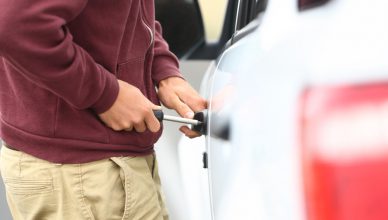Texting while driving is no joke. Every day, over 3,000 people are killed in road crashes. Many of those accidents are caused by some form of phone usage.
You don’t want any of your drivers to get injured or killed while they’re on the job, of course.
In addition to improving driver safety out of sheer compassion, you have a bottom line incentive to stop your employees from texting while driving. Keeping your drivers focused allows you to avoid vehicle repairs, legal fees, insurance rate hikes, and all the other expenses that come with getting into an accident.
In honor of Distracted Driving Awareness Month, in this post we’ll show you how to design an effective cellphone policy.
A Lawsuit Could Cost You Millions
Research shows that car crashes can put an enormous financial strain on your business:
- Transportation incidents are the #1 cause of workplace deaths
- Legal settlements for accidents that involve fatalities often top $1 million (in 2012, Coca Cola was forced to pay $21 million to a woman who was hit by one of their drivers)
- Even when a crash doesn’t cause any fatalities, property damage and legal expenses can cost you tens or even hundreds of thousands of dollars
- A driver is four times more likely to be involved in an accident when they’re using a phone
- If an employee is off the clock when they get into an accident in one of your vehicles, you can still be held liable
Want To See For Yourself How Route4Me Can Boost Your Profits?

It’s Not Just Your Vehicles That Get Damaged…
Totaling a vehicle means you’ll need to replace it with a new one, which is a huge expense.
Minor damage can also be costly. If the extent of the damage is purely cosmetic (paint chips, scratches, etc.), you’re better off than most people who crash their cars. But getting a new paint job will set you back a few hundred bucks.
Here’s another expense you need to consider: the damage a car crash will do to your brand. Your entire reputation depends on people trusting your drivers to be reliable and professional.
Texting while driving is not professional. If word gets out that one of your drivers wrecked a vehicle because they were texting, you’ll have a harder time attracting new customers. In the long run, that’ll end up being much more expensive than totaling a $30,000 vehicle.
Designing And Enforcing Your Cellphone Usage Policy
First things first: you need to express to all your drivers that the only time they’re allowed to use a cellphone is when they’re at a full stop in a designated parking area.
Telling this to your employees isn’t enough. You need to put it in writing in the official company policy document you hand out to the new members of your staff.
For more details about designing a cellphone policy, check out this free sample kit from the National Safety Council.
Threatening to penalize drivers who break your rules will help ensure that your cellphone policy is actually followed.
Another way to stop your drivers from texting while driving is to adopt route optimization software.
Poor route planning often causes your drivers to get lost – which means they might start texting you to find out how they’re going to get where they need to go. By using a route planner, you can guarantee that every route you give your drivers is 100% accurate. They won’t have a reason to pull out their phone out in the first place.
GPS tracking gets rid of another need for texting, as it lets you see where your drivers are without having to ask about it.
Do you have any questions about designing and enforcing a cellphone usage policy? Let us know in the comments section below.
Want To See For Yourself How Route4Me Can Boost Your Profits?








